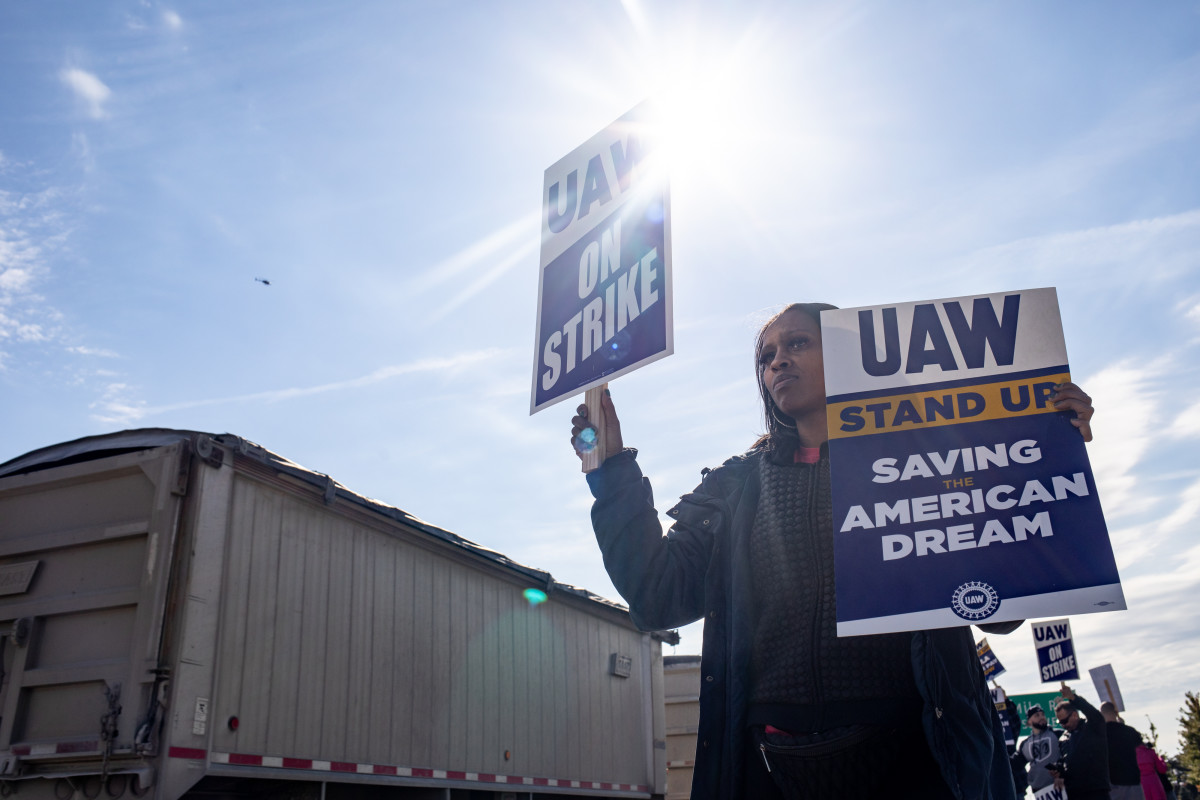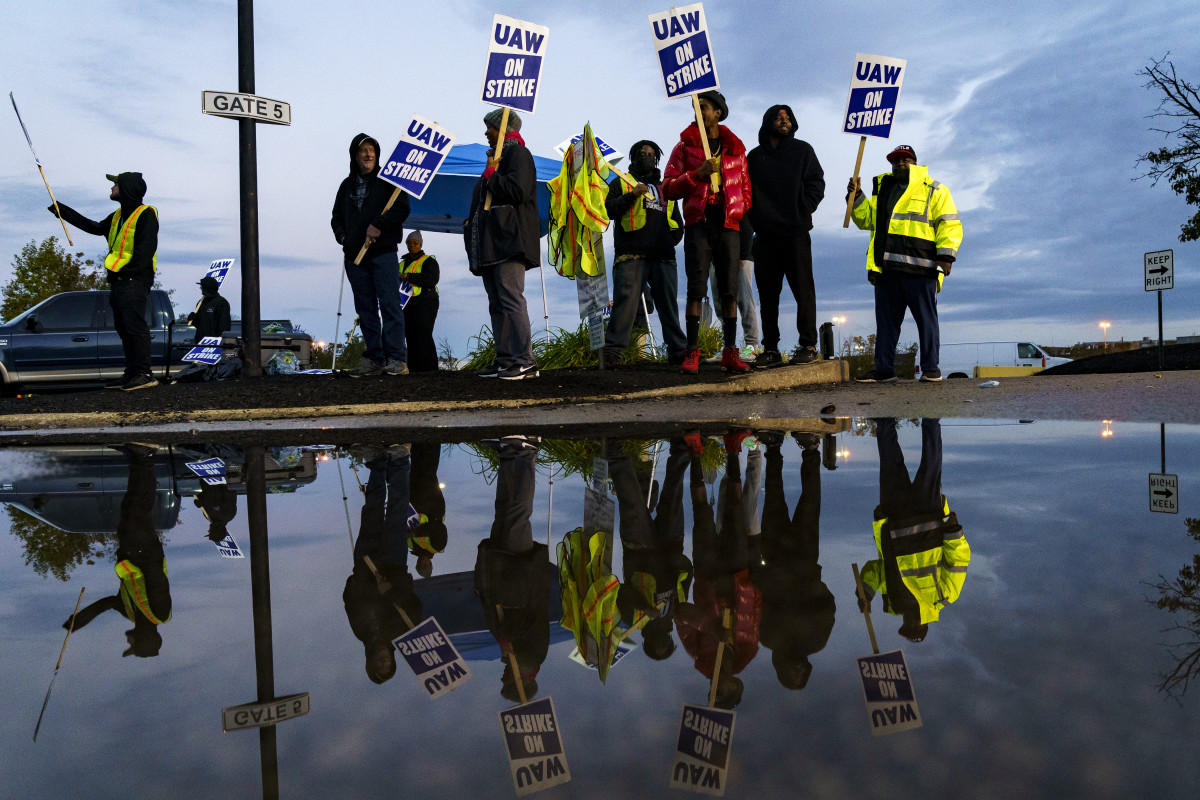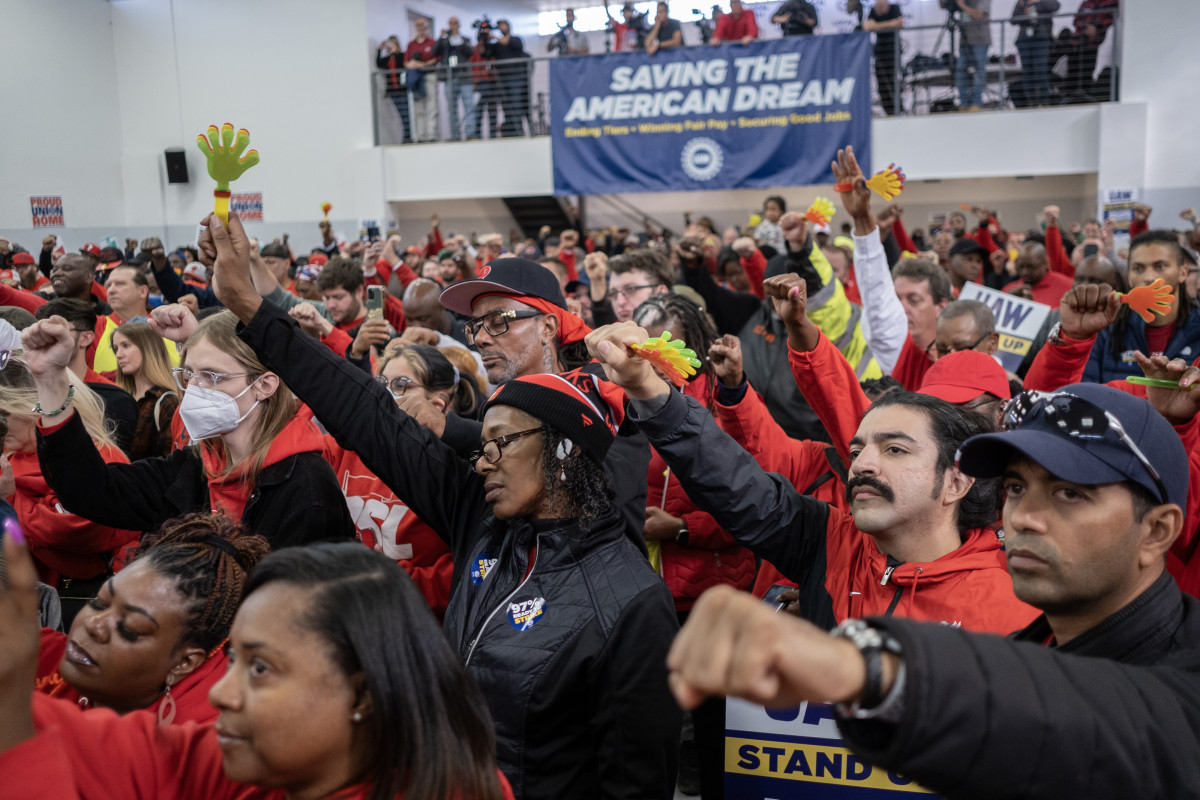
More than six weeks after the United Auto Workers union began its historic set of rolling strikes against the Detroit Three — Stellantis (STLA) -), Ford (F) -) and General Motors (GM) -) — the union reached a tentative agreement with Ford that brought its strike against the company to a close.
The deal, announced Oct. 25, features $8.1 billion in plant investments by Ford, $5,000 in ratification bonuses and 25% wage increases over the terms of the contract. Workers will receive an 11% raise upon ratification, with the remainder to be split up over the next four years. The deal additionally includes cost-of-living adjustments, better profit sharing and increased retirement contributions.
Related: Former Ford CEO warns automakers of Tesla's edge amid mounting auto strikes
Days after announcing an end to the strikes against Ford, which cost the company at least $1.3 billion, the union announced a tentative agreement with Stellantis. The details of the agreement, which must still be ratified by the rank-and-file, generally mirror the union's deal with Ford.
On Oct. 28, the same day that the union ended its strike against Stellantis, the union expanded its strike against GM, the lone holdout among the Detroit Three.

“Once again, we have achieved what just weeks ago we were told was impossible,” union President Shawn Fain said in a statement. “At Stellantis in particular, we have not only secured a record contract, we have begun to turn the tide in the war on the American working class."
According to an Oct. 23 estimate from Anderson Economic Group, the strikes, at week five, cost the economy $9.3 billion in total losses. The bulk of this, at more than $4 billion, came in losses for the Detroit Three automakers.
The Tesla Factor
Throughout the duration of the strikes, Elon Musk's Tesla (TSLA) -) has been hailed as the only real winner. Analysts and executives alike have pointed to the fact that, the longer the strikes go on, the harder it becomes for these legacy automakers to compete with Tesla and other non-unionized automakers.
And, once the strikes are concluded, competition, due to the costs of these historic deals, will further hurt the ability of these automakers to compete. Ford, for instance, said that the deal will make its vehicles as much as $900 more expensive.
Both Ford and GM have pulled their full-year guidance, citing uncertainty from the strikes. And both automakers have begun pulling back on sweeping pushes into electrification.

But with two enormous wins in the books, the UAW is already preparing for 2028, when these current contracts come due. And next time, the union is aiming to go even bigger in its fight for the working class.
"When we return to the bargaining table in 2028, it won’t just be with the Big Three, but with the Big Five or Big Six," the union said in a statement, calling the Stellantis and Ford wins a "turning point" in a 40-year-long class war.
"Billionaires aren’t going to save the American Dream. Working-class people are saving the American Dream," the union said. "The UAW is saving the American Dream. And we are doing it together."
Earlier in October, Fain hinted at these lofty goals, saying: "Workers at Tesla, Toyota, Honda, and others are not the enemy — they're the UAW members of the future."
Elon Musk, who in September criticized the terms the union was seeking, has historically been a vocal opponent of unionization at Tesla.
Despite the record wins in the two deals so far, the union didn't quite get everything it wanted; Fain's initial goals of 40% wages and a 32-hour work week seem to have been negotiated away.
Ford shares popped slightly in pre-market trading on news of the deal.
Related: Top analysts explain the real winner of historic UAW strikes (it's not the workers)
Get investment guidance from trusted portfolio managers without the management fees. Sign up for Action Alerts PLUS now.







